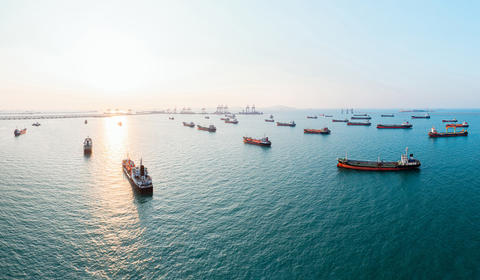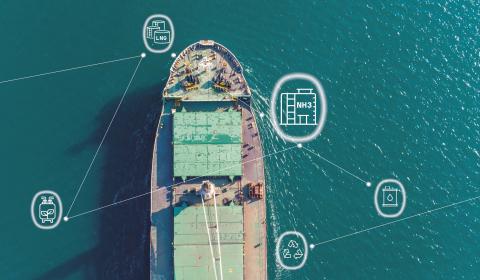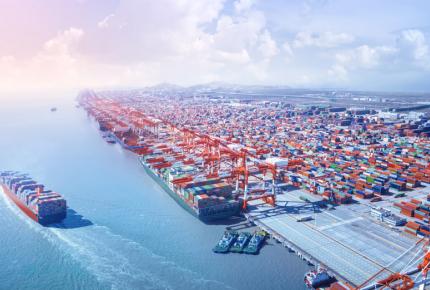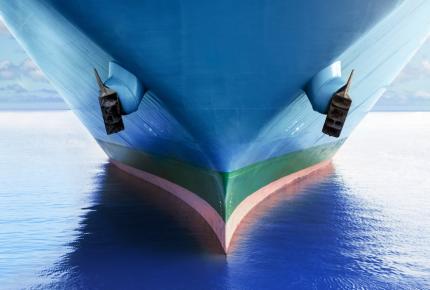
BV explains: 50 years of MARPOL
50 years ago, MARPOL, or the International Convention for the Prevention of Pollution from Ships, was born. Since its inception, it has shaped shipping in terms of both operations and attitudes. Initially concerned with oil and noxious substance discharge, MARPOL now has a much wider scope, and covers some 98% of the global merchant fleet.
Today, we are more aware than ever of the importance of our oceans’ health in sustaining life on Earth, and of our role in protecting them. So what has MARPOL achieved, what does it currently regulate, and what lies ahead?
MARPOL’s history and mission
MARPOL is a landmark IMO instrument, a turning point in humanity recognizing its responsibility to keep the seas cleaner and safer – and a point of pride in the maritime world.
MARPOL was initially adopted as a Convention in 1973, and later as a Protocol in 1978. Today, it is the principal international convention that aims to prevent ships from polluting the ocean and harmful air emissions – with the adoption of Annex VI in 1997, either accidentally or during operations.
MARPOL’s creation came at a time when the world was beginning to grasp the true scope of human impacts on the ocean. The IMO had previously implemented OILPOL, to curb some more harmful pollutant events. However, following highly publicized wrecks and spills, such as that of the Torrey Canyon in 1964, it was felt a new instrument was needed: MARPOL.
Today, tankers transport around 2,900 million metric tons of crude oil and oil products – the majority safely and without incident. Since the 1970s, despite a subsequent significant increase in the tanker fleet and growth in seaborne trade, oil pollution from ships has been dramatically reduced. This is just one example of the vital role MARPOL has played in regulating and helping change key industry practices, from ship design, to operation and life at sea.
The MARPOL Annexes: explained
MARPOL has evolved over the years. As new challenges arise, the IMO has introduced amendments in turn. This means MARPOL has adopted an increasingly holistic approach, with six Annexes covering different anti-pollution aspects.
Annex I: Regulations for the prevention of pollution by oil
Entry into force: 1983
The first MARPOL Annex covers the prevention of oil pollution through both operations and accidental discharge. In 1992, double hulls were made mandatory for all new oil tankers, and the Annex also introduced a phase in-schedule for the fitting of double hulls on existing tankers.
Annex II: Regulations for the control of pollution by noxious liquid
Entry into force: 1983
In this Annex, discharge criteria and measures are established for bulk cargos of around 250 noxious liquid substances. Their residues may only be discharged in dedicated reception facilities, unless they comply with specific concentrations and conditions. The discharge of noxious substance residues is completely prohibited within 12 miles of land.
Annex III: Prevention of pollution by harmful substances carried by sea in packaged form
Entry into force: 1992
The third Annex is comprised of general detailed standards for the packaging, labelling, documentation and stowage of harmful substances. These substances are defined according to the International Maritime Dangerous Goods (IMDG) Code. The Annex also includes standards for quality limitations as well as exemptions and notifications.
Annex IV: Prevention of pollution by sewage from ships
Entry into force: 2003
Under this Annex, the discharge of sewage into the ocean is prohibited, unless the ship has implemented an approved sewage treatment plant or an approved system to discharge comminuted and disinfected sewage. In the latter case, the vessel must be over three nautical miles from land, and otherwise over 12 nautical miles away.
Annex V: Prevention of pollution by garbage from ships
Entry into force: 1988
This Annex accounts for different types of refuse, how to dispose of them and the distance from land at which this disposal may occur. Crucially, it has implemented a complete ban on disposal of all forms of plastics into the sea.
Annex VI: Prevention of air pollution from ships
Entry into force: 2005
This latest Annex, setting limits of sulfur oxide (SOx) and nitrogen oxide (NOx) from ship exhausts, also designates Emission Control Areas (ECAs) with more stringent emission controls. In 2011, a new chapter covered mandatory technical and operational energy efficiency measures to help reduce GHG emissions from shipping.
Has MARPOL had an impact?
As well as preventing and reducing pollution from shipping, the spirit of MARPOL reminds us of what the maritime world can achieve when we take action together.
There are two sides to the success of MARPOL. The first is more concrete: what has been achieved in reducing the levels of pollutants reaching our oceans from ships. While not without limitation, MARPOL has enhanced the protection of the environment from damage such as oil spills, chemical spills, sewage, garbage and air pollution. As an illustration of this last impact, as of 2023 there are ECAs established along the Pacific and Atlantic Coasts in North America, as well as in the Baltic, Caribbean and North Seas.
The second angle of MARPOL’s achievement lies in its widespread acceptance. Some 160 counties have ratified the Convention – though the number of signatories varies per Annex – making MARPOL something of a poster child for international cooperation.
At Bureau Veritas, we believe that the maritime industry, though global and diverse, is united by its passion for the ocean and the drive to preserve it. The success of MARPOL indicates support of this view. Such instruments require the commitment and collaboration of the whole industry to succeed and produce real impact. As a class society, we are dedicated to upholding MARPOL’s implementation, helping ensure that ships are designed, equipped and operated accordingly.
What about the next 50 years of MARPOL?
Without doubt, MARPOL will have to continue to be updated to help protect against further challenges, including the fight against climate change. Most recently, Annex VI included the IMO short-term GHG reduction measures, EEXI and CII, to reduce emissions from ships. The success of these will be seen with time – but if they are to meet their intended targets, they need the whole shipping industry to work together and play its part.












